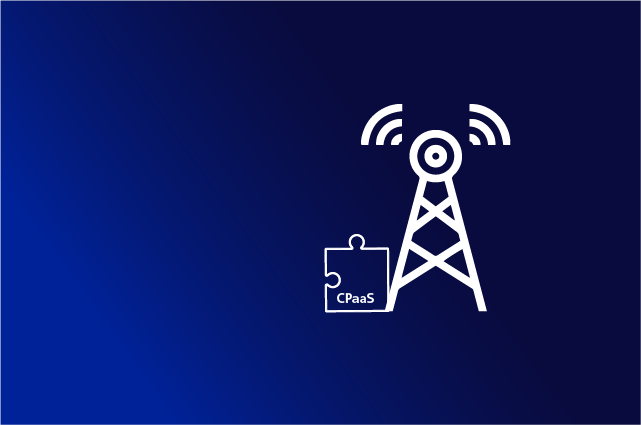Uncover the opportunities that telcos see in the CPaaS space
CPaaS platforms inject programmable voice, video, and SMS messages across enterprise applications.
To do so, they leverage operator networks, which telcos have invested big money into.
Now, CPaaS providers are beginning to reap the rewards, with Gartner predicting 90 percent of businesses will leverage CPaaS platforms by 2026. That’s up from just 30 percent in 2022.
Indeed, the CPaaS market is on the rise, and now telcos want to get in on the action.

The Trend
In 2022, global telco giant Ericsson completed its $6.2BN megadeal for Vonage, with CPaaS cited as the deal’s primary driver.
Soon after, Proximus acquired a 58 percent stake in Route Mobile and Skyvera acquired all the assets of American Virtual Cloud Technologies.
Alongside these headline-hitting deals, other prominent telcos have announced close collaborations with CPaaS providers.
In May, Nokia teamed up with Infobip to “accelerate CPaaS API development.”
Shortly before that, Deutsche Telecom and T-Mobile US kickstarted a mutual developer program to expose their network APIs.
Sharing more examples in a interview with CX Today, Rob Kurver, Founding Partner of the CPaaS Acceleration Alliance, summarized: “The potential of the entire Telco API play is enormous. There’s so much happening in the world of CPaaS. You can see that the telcos are starting to become active in different ways, sensing they have an opportunity.”
The Opportunity
For years, telcos have faced a troubling question: how will we find news ways to monetize our big investments into networks?
CPaaS may offer the silver bullet, allowing telcos to deliver new, complementary API solutions – which their 5G networks can greatly enhance.
By acquiring and partnering with CPaaS providers, telcos are shortcutting that journey and reducing time-to-market for new solutions.
There are several other benefits to these arrangements. For example, telcos can immediately access robust developer communities, pool together a vast data reservoir, and reach new audiences.
However, perhaps most pertinently, telcos and CPaaS players can leverage shared knowledge and merge their strengths to build superior solutions, with substantial connectivity and reach.
Why Not Go It Alone?
Telcos have tried to dip their toe into the CPaaS market before. Think about Telfonica’s Bluevia, Deutsche Telekom’s Developer Garden, or even the GSMA’s OneAPI initiative.
Yet, while each project seemed to imply that telcos know what developers want, they fell short of that. For instance, they often charged for accessing and using low-value APIs, and that proved a significant hindrance.
Now, with these partnerships, telcos are acknowledging they need help. That’s a positive step forward, as they get their heads around the many different types of projects that developers use these APIs for and – therefore – many routes to market.
CPaaS providers can offer the necessary support, helping telcos understand which areas of CPaaS they want to play in and the ecosystem they must engage with to maximize the value of its APIs.
Seize the Opportunity
As suggested, telcos must work out how to build developer communities and attract customers to monetize their CPaaS investments.
There are a few ways to approach this, beyond hackathons. For instance, telcos can demonstrate how they leverage their CPaaS APIs within their own businesses, offer developers template examples of how to use the APIs, and build a playground environment on their websites.
Telcos can also look to leverage longstanding relationships with existing customers, targeting enterprise IT developers, rather than focusing entirely the horizontal, long-tail developer community, which is a tough nut to crack.
Yet, the best learnings often come by following the lead of others. Take Telefonica as an example. It has made its APIs available in partnerships with the likes of AWS and Google.
In doing so, it hasn’t tied in with a specific CPaaS provider, roadmap, and ecosystem.
That may be the best path forward, as the growth of the “vendor-neutral” CPaaS platform concept perhaps showcases.
The Vendor-Neutral CPaaS Platform Concept
While some telcos tie-in with a specific CPaaS providers, they can instead build upon a vendor-neutral platform, like HORISEN, which recently scooped the Best Innovative CPaaS Provider Award at the CC-Global Awards 2024.
Such a platform is open-source, with the added benefit of continuous professional development, maintenance, and ongoing updates from a reliable vendor.
Alongside vendor independence, these bring several benefits to telcos:
- Flexibility: Choose the best features and services from different vendors without being locked into a single provider’s ecosystem.
- Low Costs: Avoid the high expense and time commitment of building a new API platform.
- Future-Proofing: Adapt to evolving communication needs by easily integrating new features and functionalities.
- Security: These platforms often have robust security features built-in, reducing the burden on individual companies to implement their own solutions.
- Scalability: They can easily adapt to growing needs, handling increased traffic or data volume without needing a complete overhaul.
Of course, there are a couple of trade-offs. For instance, a vendor-neutral approach may not offer the same level of customization as a proprietary platform.
Yet, HORISEN believes its platform is an exception. Indeed, the vendor suggests its customizable solutions can be tailor-made to meet specific needs. Additionally, as fully API-fied, its platform seamlessly integrates into diverse system environments.
Whatever the case, vendor-neutral platforms are often a powerful option for telcos – and other businesses – seeking flexibility, cost-effectiveness, and future-proof solutions.
To learn more about these benefits, read Omdia’s report: Vendor-Neutral Messaging Platforms – Helping telcos soar into a new era of messaging connectivity or contact us.
This article was published at CX Today, a trusted source for industry news.





